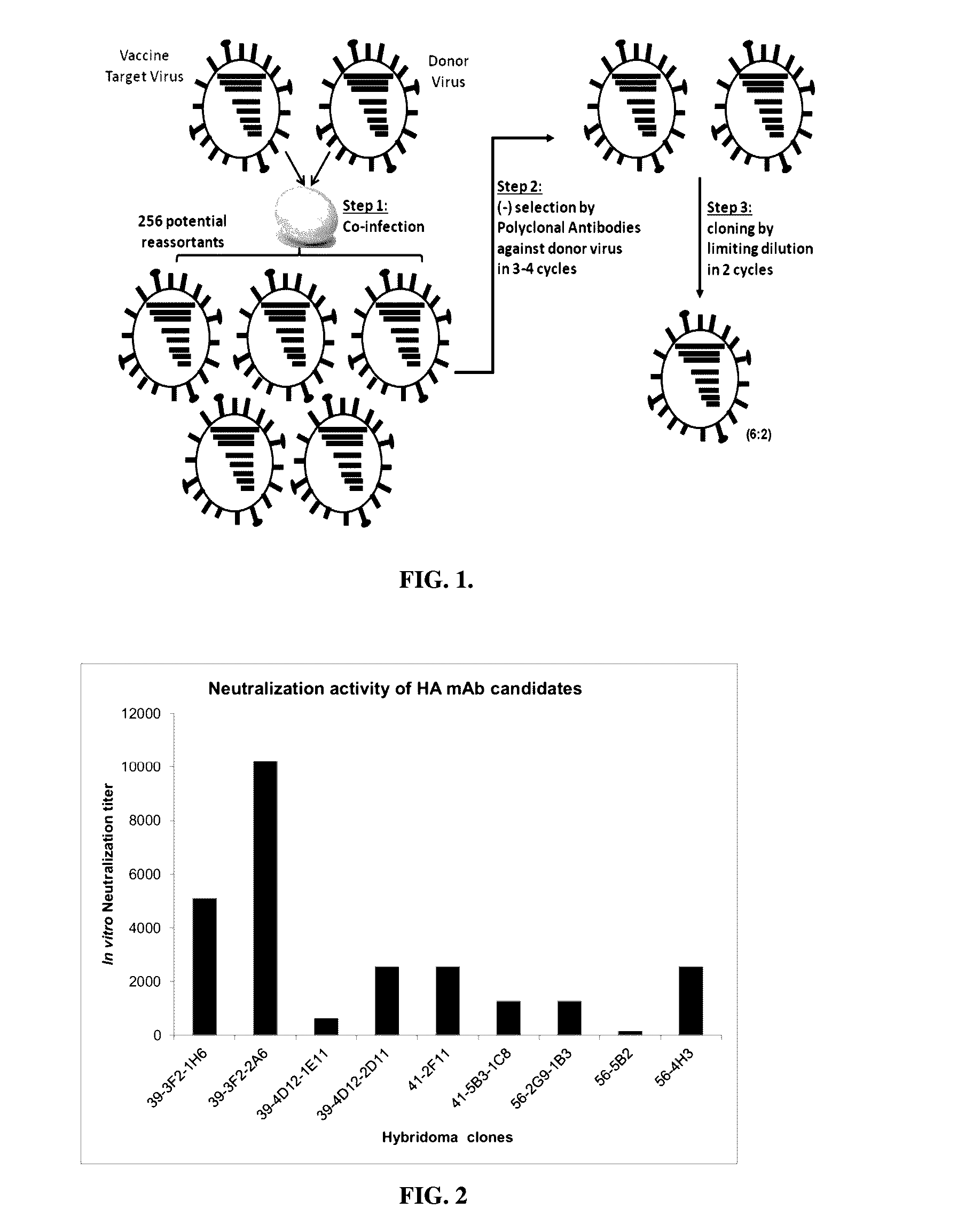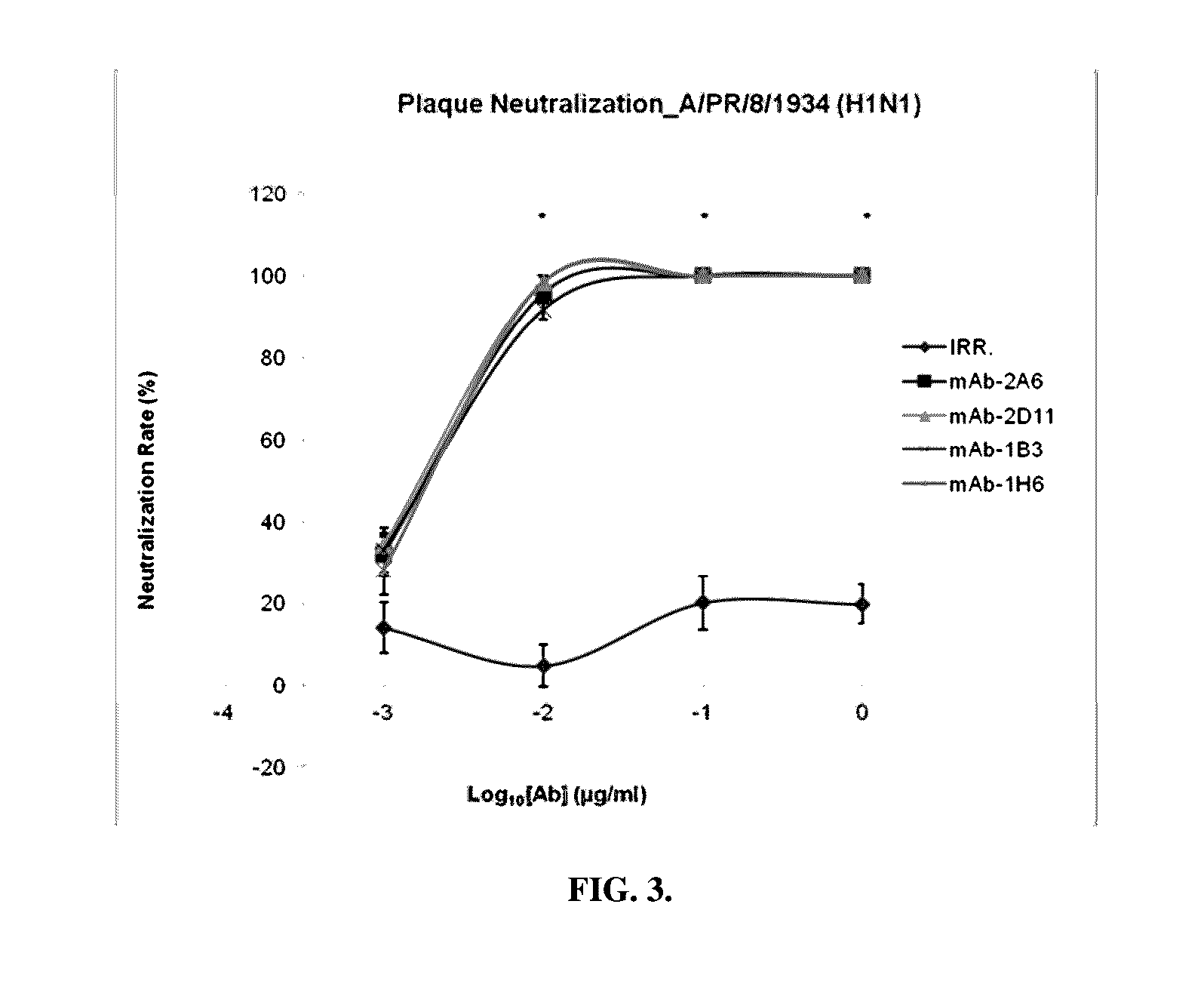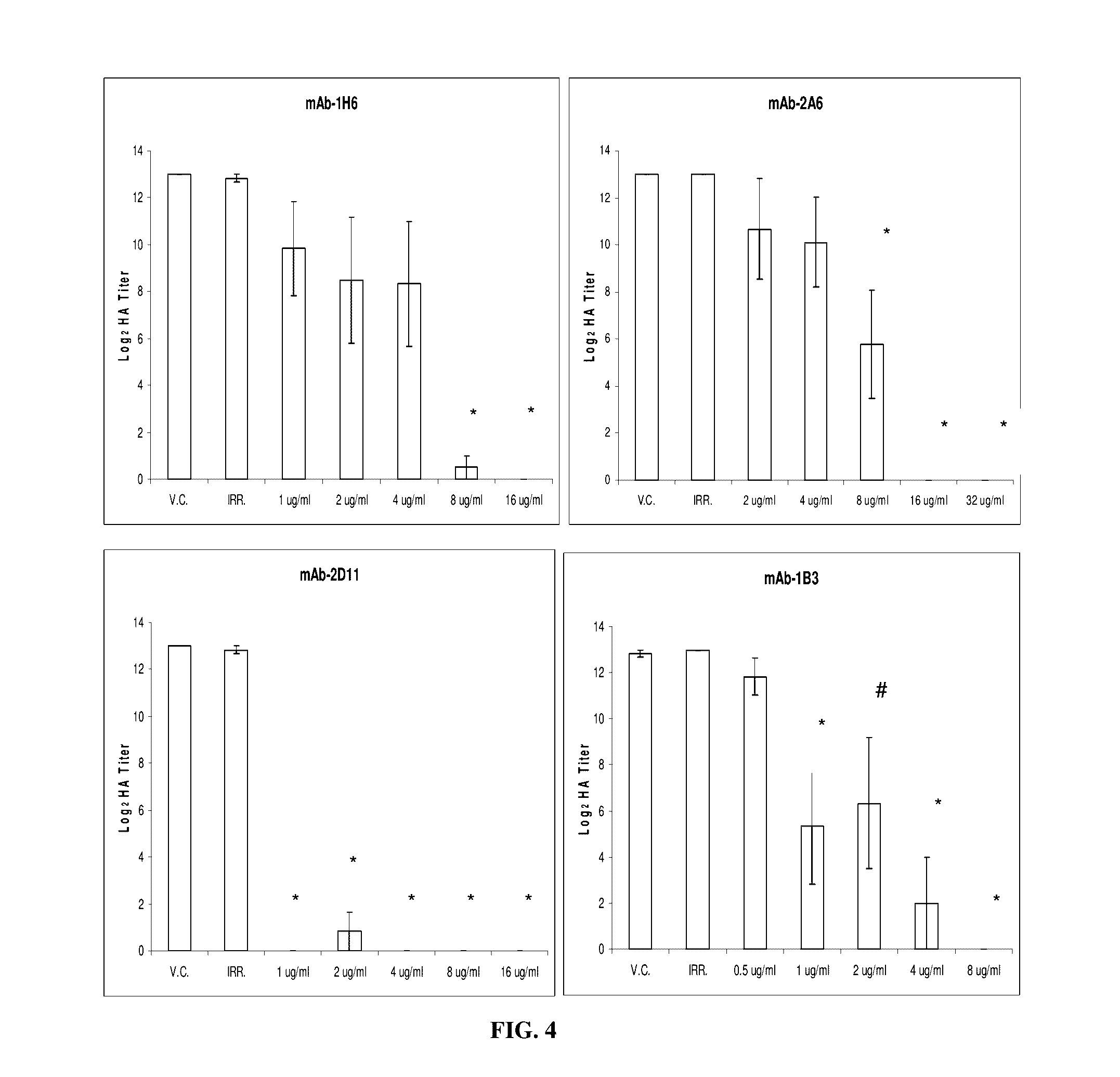Hybrid influenza seed viruses, compositions thereof, and use thereof in the diagnosis or therapy of influenza
a hybridized and hybrid technology, applied in the field of hybridized influenza seed viruses, can solve the problems of rg but not classical reassortment, disruption of the viral assembly process, and limited application of this system, so as to enhance the efficiency of classical reassortment and improve the reproducibility of “classical reassortment”. , the effect of high yielding reassortan
- Summary
- Abstract
- Description
- Claims
- Application Information
AI Technical Summary
Benefits of technology
Problems solved by technology
Method used
Image
Examples
example 1
Materials and Methods
[0323]The high yield (hy) donor, A / Puerto Rico / 8 / 1934 (PR8, H1N1) is a highly egg-adapted influenza virus which has been continuously passaged in embryonated chicken eggs since 1934. A / South Dakota / 06 / 2007 (SD, H1N1) and A / Uruguay / 716 / 2007 (UY, H3N2) are eggisolated wild type (WT) viruses received from the Center for Diseases Control and Prevention (CDC) as the vaccine target viruses fort the 2007-2008 flu season. A / California / 07 / 2009 (CA, H1N1pdm) is an egg isolate used to prepare the NYMC hy seed viruses for the 2009 H1N1 pandemic influenza vaccine. NYMC X-173 (H1N1) is a hy reassortant influenza A vaccine candidate virus incorporating six PR8 ‘internal’ genes as ‘backbone’ and hemagglutinin (HA) and neuraminidase (NA) genes from wild type (WT) virus, SD (H1N1). NYMC X-175C (H3N2) is a hy reassortant virus which possesses HA and NA from the WT virus, UY (H3N2), together with the PR8 backbone.
[0324]Madin-Darby canine kidney (MDCK) cells purchased from American ...
example 2
[0381]Neutralizing mAbs developed and characterized in the foregoing Example 1 are compared to pAbs in the selection process of classical reassortment. In particular, selection efficiency and the time of vaccine seed virus preparation parameters are compared using routine techniques.
[0382]Compared to the current classical reassortment and reverse genetics methods which both require at least 3-4 weeks to finish the generation of vaccine seed viruses (Nicolson et al., 2005; Webby et al., 2004), the hereinbefore described mAb-based classical reassortment only needs one week to ten days to prepare the vaccine seed virus. This rapid preparation is made possible by the potent and specific neutralization activity of the mAbs employed in the system, which significantly reduced the antibody selection cycle of classical reassortment. With a single cycle of selection, reassortants with the desired surface glycoproteins, HA and NA, derived from WT virus can be cleanly selected without the conta...
PUM
| Property | Measurement | Unit |
|---|---|---|
| diameter | aaaaa | aaaaa |
| length | aaaaa | aaaaa |
| lengths | aaaaa | aaaaa |
Abstract
Description
Claims
Application Information
 Login to View More
Login to View More - R&D
- Intellectual Property
- Life Sciences
- Materials
- Tech Scout
- Unparalleled Data Quality
- Higher Quality Content
- 60% Fewer Hallucinations
Browse by: Latest US Patents, China's latest patents, Technical Efficacy Thesaurus, Application Domain, Technology Topic, Popular Technical Reports.
© 2025 PatSnap. All rights reserved.Legal|Privacy policy|Modern Slavery Act Transparency Statement|Sitemap|About US| Contact US: help@patsnap.com



